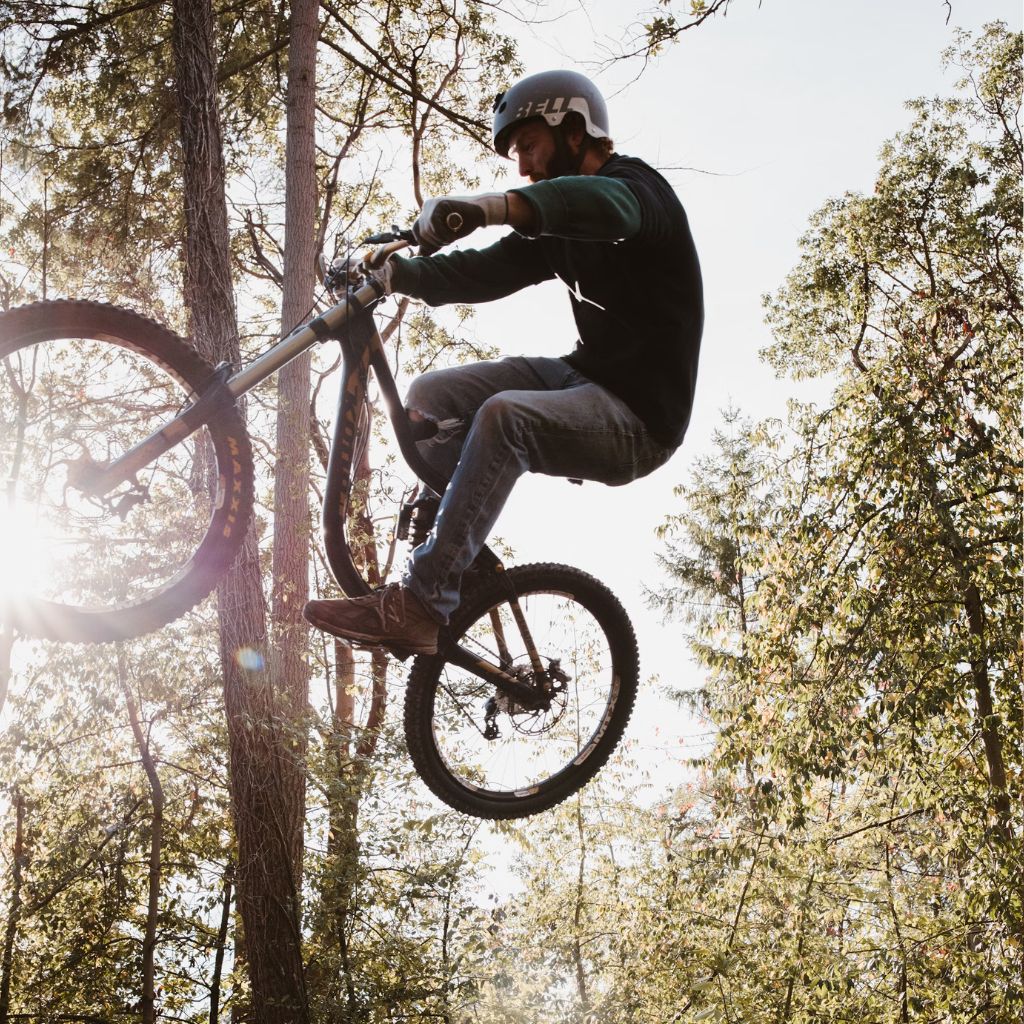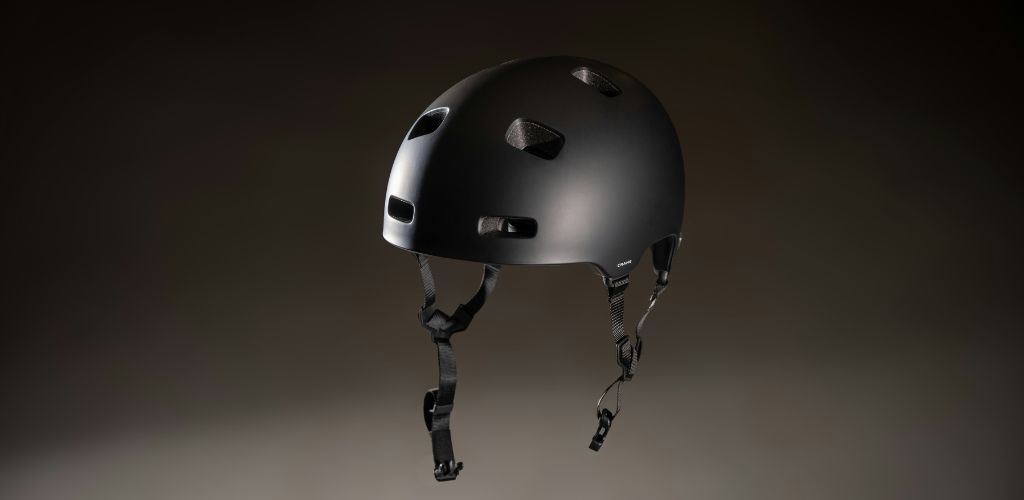When it comes to mountain biking, the helmet you choose is crucial for your safety. You might be wondering if a BMX helmet is suitable for mountain biking. To answer this, we need to understand the fundamental differences between BMX and mountain bike helmets.
BMX Helmets vs. Mountain Bike Helmets: Key Differences
BMX helmets are designed with a focus on impact protection, especially around the back and sides of the head, as BMX riding often involves jumps and tricks that can lead to falls in various directions – often on concrete, or very hard packed dirt, sculpted with water and shovels and baked solid in the sun.
These helmets are usually heavier and have fewer vents, which means they offer less airflow but more protection in specific areas.
On the other hand, mountain bike helmets are mostly designed with trail riding in mind.
They often feature extended rear coverage compared to standard road bike helmets, but not as much as BMX helmets.
Their primary focus is on providing a balance between protection, ventilation, and weight.
Mountain biking typically involves long rides, often in warm conditions, so ventilation becomes a critical factor.
Also, these helmets usually come with visors to protect against sun glare and branches.

Dirtjumping – a fusion of Mountain Biking & BMX
There is of course one mountain biking discipline which does commonly wear essentially what are BMX helmets – dirtjumping. The two sports of BMX and dirtjumping share many similarities, wheel size aside of course. They both are often centred around riding skateparks, sets of double jumps, and doing airborne tricks.
They both end up needing a similar range of skull protection as each other – and the two cultures are quite similar also in terms of riding clothing style and rider age etc, so for both of those reasons it shouldn’t be much of a surprise that they share the dirtjumping style helmet, among other things. (Though as most people will know, BMX riders for some reason are much more likely to ride with no helmet than mountain bike riders – including dirtjumpers).
Safety Standards and Certification
Safety should be your top priority when selecting a helmet for mountain biking.
Both BMX and mountain bike helmets adhere to specific safety standards, but these standards vary based on the intended use.
BMX helmets are generally built to meet the ASTM F2032 standard, which is specifically for BMX biking and involves tests for impacts at higher velocities. This standard ensures that the helmet is capable of protecting the rider in high-impact scenarios, typical in BMX riding.
Mountain bike helmets, however, often comply with standards like CPSC (Consumer Product Safety Commission) for the US, and EN 1078 for Europe.
Some high-end mountain bike helmets also meet additional standards like ASTM F1952, which is specific to downhill mountain biking and involves even more rigorous testing.
It’s important to check that the helmet you choose meets at least one of these certifications to ensure adequate protection for mountain biking.

New Technology to protect Mountain Bikers
There are also a variety of other safety technologies that have been introduced over recent years to be built into mountain biking helmets, to try and mitigate serious types of head injuries more often found in mountain bike crashes.
One prime example of this is MIPS – which is essentially a moving layer inside the helmet, designed to minimize the effect of rotation forces on the brain from a rider crashing. Exactly how effective this is in avoiding brain injury in a major mountain biking crash is still a subject of debate, but at least some studies do point to it being beneficial.
Comfort and Fit: A Critical Aspect
Comfort is another significant factor to consider when choosing between a BMX and a mountain bike helmet.
Given that mountain biking can involve several hours of riding, the helmet you choose must be comfortable for long periods – not only in regards to the fit against your head, but also in terms of getting rid of excess heat so we don’t feel like our brain is being slowly boiled on a long ride!
BMX helmets, being heavier and less ventilated, might not offer the same level of comfort as mountain bike helmets on long rides – as for example they’re not designed for being worn to ride up steep hilly or mountainous trails for hours on end.
Mountain bike helmets are designed to be lighter and more breathable, with various fit adjustment systems to ensure a snug yet comfortable fit.
Proper fit is crucial for the effectiveness of a helmet. A poorly fitting helmet can compromise protection. Mountain bike helmets often come with adjustable retention systems that allow you to fine-tune the fit.
Make sure the helmet sits snugly on your head without being too tight, and the straps should form a V-shape around your ears and fasten securely under your chin.
Making the Right Choice for Your Riding Style
Ultimately, the choice between a BMX and a mountain bike helmet depends on your specific riding style and needs.
If you’re into aggressive mountain biking, where the risk of high-impact crashes is higher, a BMX helmet might offer more protection than a lightweight entry-level cheap mountain biking helmet in some scenarios.
Though obviously downhill and freeride mountain bikers are more often going to wear a full face helmet, often with goggles – to give full coverage to the sides and back of the head, as well as giving your face and teeth a fighting chance should you end up flying face-first into the ground, or a tree, during a crash.
However, if you’re into cross-country or trail riding, a mountain bike helmet would be more suitable due to its lighter weight and better ventilation.
The bottom line on a BMX helmet for mountain biking
In summary, while BMX helmets offer excellent protection, especially in high-impact scenarios, they may not provide the comfort and ventilation needed for longer, more endurance-based mountain biking.
Mountain bike helmets, with their lighter weight, better ventilation, and specific safety standards, are generally more suited for most mountain biking activities – while full face helmets for mountain biking are generally going to be a better choice for higher risk styles of mountain biking such as downhill.
Choosing the right helmet is a personal decision that should factor in your style of riding, comfort preferences, and safety requirements.
No matter what helmet you choose, ensure it fits well, and is suited for the type of mountain biking you plan to do.
Remember, the best helmet is the one that you’ll wear every time you ride, offering a balance of safety, comfort, and suitability for your mountain biking adventures.
See you out shredding trail!

